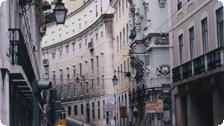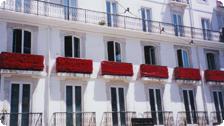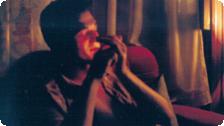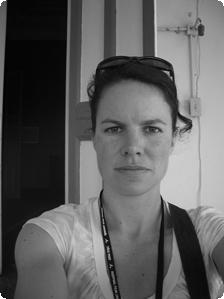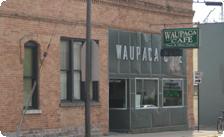Inspiration: Portugal: Não é Nada
by Audrey Mei
At 9:30 a.m., Sunday, November 1, 1755, Lisbon was struck by the first of three earthquakes, the third of which succeeded in reducing the bustling town—a center of wealth and culture—to rubble.
The stone roofs of the churches came tumbling down onto the thousands of churchgoers who had congregated to worship All Saint’s Day, and fires broke out throughout the city. Survivors of the quake headed for the river for refuge, but then at 11:30 a.m., the river flooded and the city was battered by a series of tidal waves, wrecking the ships packed with citizens fleeing the fires. Although the epicenter was in Algarve in the south, shocks were felt as far away as Italy, and an estimated 15,000 people died in Lisbon alone.
But thanks to immediate planning by Sebastião José de Carvalho e Melo, (later to become the Marquês de Pombal), the city was rapidly rebuilt in a surprisingly modern fashion; thus, the efficient grid design of the downtown, in contrast to the winding tangle of alleys of pre-earthquake Lisbon. In fact, Lisbon became one of the first cities to have the European Avenue plan, with commercial concentrations along elegant avenidas, with parks of grass and fountains lining the middle. However, parts of Lisbon, namely the Alfama district, retain some of the old tangle of alleys.
One of these streets in the Alfama is the Rua da Madelena, which I have nicknamed Gasse der Sanitätshäuser, Alley of the Orthopedics. On this street, positioned one after another, is a shockingly large array of orthopedic boutiques, with specialties ranging from custom-made rubber walking-stick tips to plus-size orthopedic support hose. Store owners and customers alike clunk and rattle up and down this dark, cobble-stoned alley late into the afternoon, luxury upholstered wheelchairs and hip MRI scans proudly in hand.
And for those of you who watch the international news, you may have caught the blurb about Sunday, April 25, 2005 being the thirtieth anniversary of the Carnation Revolution, the end of sixty years of dictatorship in Portugal, which transpired on April 25, 1974. The run-up to this day was filled with special exhibitions, lectures, and cultural events, and on the day itself, the Portuguese fado singer Marisa sang the national anthem in the parliament, and there was a procession through the city.
But I didn’t wake up to the sounds of commemorative marches streaming past my hotel room on the Avenida da Liberdade in Lisbon on Sunday morning. I was awoken in the countryside by the most biological of alarm clocks: a flock of roosters and a screaming swine directly outside the bedroom window. I had spent the night in Mira, where Arménio had invited me to stay the weekend at his mother’s house. Mira is a tiny beach town on Portugal’s northern coast, a town so small it barely gets its own dot on the map.
Yes, girls, I know…the guy, the town…The image that Arménio gives of being a clean-cut, responsible, viciously intelligent mechanical engineer is just a cover-up for the happy-go-lucky, pot-smoking hedonist he really is. I met him in Coimbra, where our conversation began about the Portuguese version of “Who wants to be a Millionaire?” (And for those of you who worry, rest assured I only smoke things when it makes for good writing material.) Anyway, Arménio showed me around this tiny speck called Mira and brought me to the local hang-out, Tosta Mista Café, a café-bar with a pinball machine and a TV silently flickering the FC Porto game. This bar was filled with familiar faces from Arménio´s youth, young small-town faces which are somehow attractive, but then again some look like they’ve been narrowly grazed: the handsome fellow behind the bar is hunchbacked and the pretty girl sitting with her friends has crossed eyes. There were nice people here, and one loquacious English-speaking man explained the entire history of late colonial Portugal to me, using cigarette cartons and lighters to represent the African continent and delineate Angola, Mozambique, and Madagascar, respectively.
Arménio´s driver’s license was temporarily revoked two months ago after a car accident, so I was surprised when he said, “Let’s drive to the beach!” When I asked him about it, he said, “It’s okay! The policeman in Mira is my cousin.” And the mayor? I asked, half-jokingly, Is he your uncle? “No,” he answered matter-of-factly. “The last mayor was my neighbor, really nice guy, intelligent. The new mayor was our family doctor. But he stopped practicing when he became mayor.” Arménio also told me about the current infestation of drugs in tiny little Mira. Portugal, being entirely coastal, has become an active gateway for drug traffic primarily from Africa into the European continent. Although the situation is much worse in the beach resort zones of the South, Mira also sees plenty of action. Boats delivering drugs arrive regularly during the night to be picked up on a relay to Spain. But once or twice a month, the deliveries are aborted for various reasons, and packages of cocaine are abandoned on the sand. So, before Fisherman José calls the police (Arménio´s cousin), the residents inevitably catch wind of the shipment and the goods are distributed amongst them.
But that is only the dark side of reality in Portugal and alas, come Saturday, my journey will take me to Sardinia in the Mediterranean. I wish I had a video camera or something more to capture my experience here, the language, the smells. The singing voice of a woman from a smoky, crowded cellar; the quiet whisper of Não quero que tu hoje vais at daybreak, which is forever emblazoned into your memory…
And the old dames in black will sing Doo Wop all night long.
Travel Tips Portugal: Lisbon and Coimbra
Use public transportation to get around. If you get lost, someone nearby will speak English because, unlike Spain, France, and Germany, they don’t dub the American TV programs. The Portuguese roads are some of the most dangerous in Europe, so don’t drive if you don’t have to. The train and bus network is good, but don’t get too depressed when it looks third-world.
Lisbon
Where to Stay
There is one inexpensive place where I’ve already stayed several times. One doesn’t need more than this. It simply rocks. Pensão Alegria consistently gets raves in the Internet and it has just improved with the dining room downstairs to offer breakfast. I’ve peeked into other pensions in the Baixa and they are all gross compared to Alegria. Ask for a room on the front of the building facing Praça da Alegria. In the winter, this side of the building is colder but space heaters are provided. Book ahead, especially in high season.
Pensão Alegria
Praça da Alegria 12
Lisboa 1250
mail@alegrianet.com
Where to eat
There are too many cafes in the Baixa to count, where you can sample the Portuguese pastries. Try a few natas com canela, and a mousse de chocolate, get it over with, and move on…
The best food in Portugal is from Alentejo. While in Lisbon, go for the whole effect, be it touristy, at Casa do Alentejo, Rua das Portas de Santo Antão 58. A less known, more intimate locale with better food is around the corner from Pensão Alegria, O Restaurante Mal Amanhado, Rua Alegria 54-A.
Café Nicola, on the west side of Rossio, is a famous place; the poets and writers, however, are a thing of the past.
Up in the Alfama, lodged underneath the Museu de Artes Decoratives (Largo das Portas do Sol 2) is a very cool café called Café Cerca Mouro. It’s a tiny hybrid of lounge and cave in a re-vamped 17th c. cellar. The girl behind the counter once lent me her own umbrella when it started to pour and I needed to find a kiosk to buy myself one.
What to see
Museu Calouste Gulbenkian: Avenida de Berna, 45 A. I’ve been to Rome and Florence and can definitively say that if you are a fine-arts fan, the late Mr. Gulbenkian did a tremendous job assembling an amazing, eclectic collection. His objects represent the cream of many genres. The museum is not huge, but give yourself a few hours to take it in. It is unusually satisfying.
Mosteiro dos Jerónimos: Praça do Império. Every Portuguese monastery has its features, but this one may be the most beautiful, with the spacious, soaring ceiling of the church of Santa Maria. But, by virtue of is metropolitan location, this also tends to be the most crowded monastery.
Centro Cultural de Belém: Praça do Império. A sprawling complex of modern art exhibitions. For contemporary art lovers, this is an international gallery space that requires several hours to go through.
São Vicente de Fora: Largo de São Vicente. See the Augustinian monastery, the museum exhibition, then the old refractory where the sarcophagi of almost every king and queen reside. Be forewarned if you are visiting alone, there is a stone mourner, face in her hands, poised eternally at the tombs of Dom Carlos I and his son Luís Felipe, who were assassinated at the Praça do Comércio in 1908. Yet seeing her is worth the visit.
Need internet access?
Go to the Yorn store basement, at the corner of Rua Nova de Almada and Rua Garrett. It’s amply equipped and laid back, underneath the plastic, youth-filled department store.
Coimbra
Where to stay
If you are looking for a cheap place to throw your stuff, just exit the train station Coimbra-A and walk across the street to Pensão Internacional. Here, you will see the finest examples of drop-dead gorgeous young Portuguese men working at the counter. Helder has the early shifts until four p.m., and Arménio takes over then until midnight. Although, if you read the travelogue above, you’ll know that Arménio is no longer up for grabs…The rooms are basic, fit and newly remodeled, some single rooms are so miniscule that it’s worth it just to experience Portuguese sense of space.
Pensão Internacional
Avenida Emilio Navarro 4
t 351.239.825.503
For something a tick fancier, stay at the Astória just down the street. Just recently, the city agreed to fund replacement of all the hotel’s windows, as it is a historical building.
Astória
Avenida Emilio Navarro 21
t 351.239.822.057
Where to eat
Adega Paço do Conde, in the Baixa at Rua Paço do Conde 1, is affordable and offers almost any kind of meat you can dream of.Closed Sundays.
Santa Clara (Galeria Bar): Rua António Augusto Gonçalves, 67. Good lunch, it’s a favorite for Arménio to bring his mother when she comes to visit. Riverside view, stylish and serene.
Adega Típica a Pharmácia: Rua do Brasil, 96/98. A little more upper crust. Try the bacalhau com natas, cod fish in a casserole with potatoes with cream. Also, the polvo á lagareiro, octopus with olive oil and garlic.
What to see
Unversidade de Coimbra: 1209 was a long time ago. That’s when King Dinis founded this university, one of the oldest in Europe. Find the Porta Férrea at the top of the hill, the bell tower will guide you, and go from there. The rest is very self-explanatory.
Baixa: Go shopping in this area, starting at Praça 8 de Maio and continuing either along the main drag (Rua Visconde da Luz) or get lost in the labyrinth of one of the side streets.
Alta: Well, Coimbra is so tiny that you can’t miss the Upper Town (“Alta”), uphill from the Baixa. Follow the signs to the Sé Nova and wander about the alleys on the way. If it’s evening, stop by the Bar Quebra Costas on the stairs leading up to Largo de Sé Velha.
Praça da República: Some visitors don’t get this far over the hill. It’s usually crowded with students of the University, especially at night when they visit hang-outs like Tropical, at the corner of Rua Alexandre Herculano, after a show at Teatro Académico Gil Vicente, which hosts world-class performing artists.
A Capella: Now this is a real gem. I haven’t read about it in any guide yet, and since it just recently opened, very few know about it yet, and in a way I want it to stay that way…It’s a little stone chapel tucked away on Rua Corpo de Deus, above and behind the City Hall, that was falling into disrepair until it was rescued and transformed into a wine and fado bar. It’s super sweet, chic, and as intimate as can be. The owner is also a fado singer and he’ll appear at night on the mini stage belting away like Richard Gere in his black robe. Very very cool, please don’t tell everyone, it’s our secret…By the way, please walk there, don’t drive.
Need internet access?
There is a small shopping mall slightly northeast of town center, at the corner of Rua do Carmo and Avenida Fernão Magalhães, five minutes from the train station. On the second floor, you’ll find a little internet café, reliable and nice, the owner runs it.
* * * *
About the Author
Audrey is a classical cellist, Rolfing bodywork practitioner, and hobby travel
writer currently based in the San Francisco Bay Area. She is a former Fulbright
scholar for Cello Performance at Sibelius Academy in Helsinki, Finland, and holds
degrees in music and biological psychology from New England Conservatory and Tufts
University. Her studies and musical career have brought her to live in Finland,
Sweden, Hong Kong, and Germany, where she completed her training for Rolfing
Structural Integration in Munich in 2000. Aside from her interests in the healing
arts and music, she also dedicates her free time to exploring astrology, travel,
anthropology, linguistics, yoga, and Tibetan Buddhism. While she moonlights in San
Francisco, her life is intertwined with Lorenz, her eternal companion and lover of
ten thousand years, before she travels again.
Discover more from Tango Diva
Subscribe to get the latest posts sent to your email.

